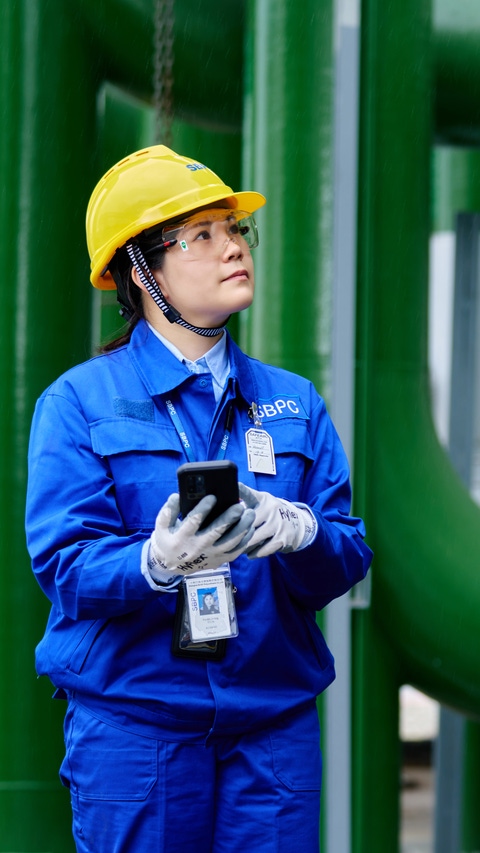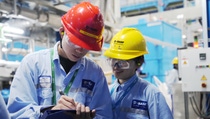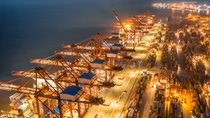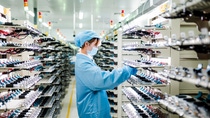BASF in Greater China 2022
Energy efficiency & environmental protection
Energy efficiency & environmental protection
We are committed to energy efficiency and climate protection in this energy-intensive industry. We aim to significantly reduce our carbon footprint through the overall carbon management including deploying advanced technologies and processes, constantly upgrading facilities, and increasing use of renewable energies. Our production processes are being optimized as energy-efficient as possible with the help of comprehensive energy management. Over the long term, we continue developing new processes and technologies to further reduce our greenhouse gas emissions.
- Total energy consumption increased as a result of full reporting of acquired sites
The total energy consumption of BASF sites in Greater China in 2022 increased, primarily due to the full reporting of four acquired facilities in 2021. Due to full reporting, certain sites recorded higher production and usage of residue fuel and fossil fuel. Electricity consumption increased by 14.1% to 1.159 million megawatt hours (MWh) in 2022 (2021: 1.015 million MWh). Steam supply totaled 3.091 million megawatt hours, 0.5% more than 2021 (2021: 3.076 million MWh). The usage of fossil and residual fuels in power plants for production was 1.6% higher in 2022 than in 2021 (2022: 0.927 million MWh, 2021: 0.912 million MWh).
We are committed to our carbon neutrality goals by improving energy efficiency. In 2022, most of our sites in Greater China made great efforts to reduce energy consumption. One site in Chongqing reduced energy consumption by improving cold insulation. Another site in Shanghai also implemented various measures, including the use of renewable energy. Since BASF Greater China's first photovoltaic (PV) power station became operational in 2020, we have been expanding the PV panel installation area to improve the share of renewable energy in the site's electricity supply. The PV panels have now been implemented and contributed to CO2 emission reduction.
We also collaborated with external partners to further improve energy efficiency. Shanghai has eight sites actively engaging in the local pilot carbon emissions trading scheme (ETS). We work closely with industry associations such as the China Petroleum and Chemical Industry Federation (CPCIF) and the Association of International Chemical Manufacturers (AICM) in preparing for the design and implementation of national ETS, and proactively promoting regular dialogues with relevant authorities.



- Decrease in greenhouse gases (GHG) emissions due to increase use of renewable energy
BASF aims to reduce its global greenhouse gas emissions worldwide by 25% by 20301 compared with 2018, and achieve net zero emissions by 20501. All BASF sites in Greater China have implemented various measures to contribute to this ambitious goal.
In 2022, GHG emissions from BASF’s chemical operations in Greater China totaled 1.176 million metric tons, down by 0.5% compared with last year (2021: 1.182 million) due to increase use of renewable energy.
Aside from greenhouse gas emissions, BASF also monitors non-GHG air pollutants such as inorganic compounds like carbon monoxide (CO), sulfur oxides (SOx), nitrogen oxides (NOx) and ammonia, as well as dust or non-methane volatile organic compounds (NMVOC). Air pollutants from BASF’s chemical operations in Greater China were 318 metric tons (up by 1.9% compared with 312 metric tons in 2021).
In Greater China,several sites implemented a real-time graphical CO2 footprint management dashboard. It can accurately harness the carbon emissions of each process unit and shed light on defining optimal carbon emission limits for optimization in the plant by leveraging concrete process know-how.


Water
- Sustainable water management with mandatory protection plans
- Using water responsibly
Water is a precious and critical resource in the chemical industry. It is used as coolant, solvent, cleaning agent, and in the manufacturing of our products. BASF has set global goals for sustainable water management, including the responsible use of water in our production sites’ water catchment areas and along the entire value chain. BASF sites in Greater China adhere to group requirements that are aligned with the globally applicable standards and are exploring associated initiatives. The European Water Stewardship (EWS) Project has been completed at 14 BASF locations in water-stressed parts of Greater China, with four more sites planned by 2030.
To avoid unforeseen emissions and the pollution of surface or groundwater, BASF developed a water protection strategy for each manufacturing site, as a mandatory part of the global Responsible Care® initiative, of which BASF is a member. The wastewater protection plan involves assessing the risks of wastewater and drawing up suitable monitoring methods. Wastewater risk assessment helps identify the potential risks of unexpected wastewater releases. Regular audits are carried out to ensure that appropriate measures are implemented and complied with.
Emissions of water pollutants in Greater China increased in 2022 compared with 2021, mainly due to the full reporting of four acquired sites in 2021. Emissions of organic substances (COD) totaled 108.6 metric tons (2021: 104.2 metric tons). Phosphorus emissions were at 0.602 metric tons (2021: 1.097 metric tons). Nitrogen emissions were at 15.2 metric tons (2021: 11.5 metric tons), while heavy metal emissions rose to 0.039 metric tons (2021: 0.037 metric tons).
We continued to improve water usage at our China sites. in China. One site in Shanghai optimized the amount of circulating cooling water by controlling of hand valve to reduce the cooling flowrate Another plant in Shanghai switched to onsite distillation water to wash material, which not only met product process requirements but also reduced wash water consumption by 30%.
With certain sites in Greater China producing water, the total water supply was 12 million cubic meters in 2022 (2021: 12.1 million cubic meters). Among them, 5.7 million cubic meters were used in production (2021: 5.1 million cubic meters), with the remaining predominantly used for cooling purposes. We conserve water by recirculating as much water as possible. The recirculated water used for cooling at BASF’s Greater China sites amounted to 621 million cubic meters in 2022 (2021: 611 million cubic meters).


Waste
- Continuous efforts to reduce and recycle waste
- Audits of external waste management companies
BASF strives to design products and processes that minimize waste as much as possible. If waste is unavoidable, we explore recycling or energy recovery options at BASF’s existing Verbund site. Waste from BASF’s chemical operations in Greater China totaled 96,680 metric tons in 2022, a significant 11.7% drop from the year before (2021: 109,489 metric tons).
One site in Shanghai optimized the wastewater pre-treatment process to limit the generation of hazardous waste. In 2022, the total amount of waste recovered was at 69,378 metric tons (2021: 79,598 metric tons); while the total waste disposed was at 27,302 metric tons (2021: 29,891 metric tons).
External waste management providers are audited on a regular basis to ensure that hazardous waste is appropriately processed and disposed of. Since 2013, we have been closely monitoring the soil and groundwater status of all sites in Greater China.

.jpg)



